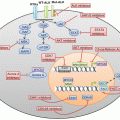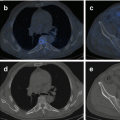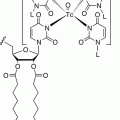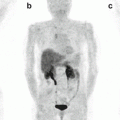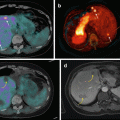© Springer International Publishing Switzerland 2017
Karel Pacak and David Taïeb (eds.)Diagnostic and Therapeutic Nuclear Medicine for Neuroendocrine TumorsContemporary Endocrinology10.1007/978-3-319-46038-3_66. Molecular Genetics of Gastroenteropancreatic Neuroendocrine Tumours
(1)
Experimental Surgery, Department of Surgical Sciences, Uppsala University, Uppsala University Hospital, Building 70, 75185 Uppsala, Sweden
Keywords
SI-NETPNETGeneticsMEN1VHLTSCNF1mTOR pathwayATRX/DAXXYY16.1 Introduction
The ultimate cause of tumor growth is the presence of genetic alterations that deregulate the normally tightly controlled cell division, cell growth, programmed cell death and tissue architecture [1]. In the specific case of neuroendocrine tumors (NETs), it has been clear for a long time that there is a hereditary component with, in particular pancreatic NETs (PNETs) occurring as a part of autosomal dominant syndromes. Several key genes and key pathways in neuroendocrine tumorigenesis have been identified in familial syndromes. More recently, large-scale whole-genome sequencing (WGS) and whole-exome sequencing (WES) studies, where the entire genome of a tumor or the coding fraction of it, respectively, have been resequenced, have helped shed further light on the genetic aetiology of NETs. However, much remains to be discovered, especially in non-pancreatic NETs, where the genetic drivers are still often completely unknown. This chapter attempts to provide an exposé of the current knowledge of genetics in gastroenteropancreatic neuroendocrine tumors.
6.2 Pancreatic Neuroendocrine Tumours
Pancreatic neuroendocrine tumors (PNETs) are uncommon tumors of the pancreas. PNETs are traditionally believed to arise from the pancreatic islets – the hormone-producing cell clusters that are intermixed with the exocrine pancreas and comprise approximately 1 % of the cells in the pancreas. However, careful study of precursor lesions has suggested that at least some PNETs may be derived from non-islet structures, e.g. ductal cells [2, 3]. Significantly rarer than the more well-known and highly lethal exocrine pancreatic tumors, PNETs account for approximately 1–2 % of all pancreatic neoplasms. Pancreatic NETs may be hormonally silent, non-functioning (including tumors producing and secreting pancreatic polypeptide and or neurotensin, based on the absence of clinical symptoms), or produce any in a range of peptide hormones, including insulin, glucagon, VIP, somatostatin and gastrin as well as ectopic hormones. With the exception of insulin-producing PNETs (known as insulinomas), the tumors are often malignant, with frequent metastatic spread to the liver at the time of diagnosis [4]. The 10-year survival is currently estimated to around 34 % for functional tumors and 17 % for non-functional tumors [5].
6.2.1 Familial Syndromes
It has been known for the better part of a century that PNETs occur in familial forms as part of several inherited genetic syndromes. The syndromes include multiple endocrine neoplasia type 1 (MEN1), von Hippel-Lindau disease, tuberous sclerosis and neurofibromatosis type 1 (also known as von Recklinghausen’s disease). PNETs arising in the context of inherited syndromes occur at an earlier age than sporadic tumors [6, 7]. Management of the disease can be complicated by the presence of numerous lesions in multiple organs, for example, simultaneous lesions in the anterior pituitary gland, parathyroid glands and pancreas in MEN1. The hereditary natures of these disorders breed implications not just for the individual patients but also for their families; genetic testing of offspring is warranted.
6.2.1.1 Multiple Endocrine Neoplasia Type 1
Multiple endocrine neoplasia type 1 was first described as an autosomal dominant trait by Dr. Wermer in 1954 [8]. However, concomitant hyperplasia and/or neoplasia in the classic triad of the pancreas, anterior pituitary and parathyroid glands had been described in the medical literature prior to this [9]. In addition to pancreatic, pituitary, and parathyroid lesions, affected individuals may develop other tumors including thymic carcinoids, thyroid adenomas and adrenocortical tumors [10, 11]. In 1988, the MEN1 gene was localized by deletion mapping to the long arm of chromosome 11, and it was demonstrated that the unaffected allele is lost in pancreatic lesions from affected kindred [12]. In 1990, MEN1 was further determined to be located in a narrow region on chromosome 11q13 [13]. In 1997 the MEN1 gene was cloned [14]. Subsequent to this, numerous deleterious mutations (the majority leading to a truncated protein) have been found in different affected families [15]. The penetrance of the disease is nearly complete [16]. PNETs occur in about 40 % of patients with MEN1 [10]. A hallmark of MEN1-associated PNET is multiplicity; the pancreata of MEN1 patients often show multiple microadenomas, with one or a few larger NETs [17]. This can be contrasted with sporadic cases which present with a solitary lesion [7].
6.2.1.2 Von Hippel-Lindau Disease
Von Hippel-Lindau disease (VHL) is a highly penetrant autosomal dominant trait with a prevalence of 1/36,000 live births [18]. Affected individuals may develop hemangioblastomas, pheochromocytomas and endolymphatic sack tumors, in addition to various forms of pancreatic cysts and pancreatic neuroendocrine tumors [18]. PNETs have been determined to develop in 12–17 % of patients affected by VHL [19, 20]. The tumors are most frequently non-functional [21]. The VHL gene was localized and cloned in 1993 [22]. The protein functions as part of an E3 ubiquitin ligase [23] that is required for the degradation of hypoxia-inducible factor (HIF) [24]. In the absence of the functional protein, a pseudo-hypoxic state occurs, which drives cellular survival and proliferation. Thus, it plays the role of a tumor suppressor. Like MEN1, VHL follows Knudson’s two-hit hypothesis, with the inherited wild-type allele being deleted in the tumors [6].
6.2.1.3 Tuberous Sclerosis
Tuberous sclerosis complex (TSC) is an autosomal dominant genetic syndrome which may involve development of multiple benign tumors in various organ systems as well as behavioural abnormalities, seizures and developmental delay [25]. The syndrome is caused by inactivating mutations in either TSC1 on chromosome 9 [26] or TSC2 on chromosome 16 [27]. The two genes encode the proteins hamartin and tuberin, respectively, which form a heterodimer that acts as a negative regulator of mTOR signalling [28]. The first report of a PNET in the context of tuberous sclerosis complex was published in 1959 [29]. Since then, a number of case reports describing PNETs in patients with TSC have been published. A recent review of the association between neuroendocrine tumors pinpointed PNETs as a likely rare feature of TSC [30]. The association is further corroborated by the presence of TSC2 mutations in a subset of sporadic PNETs [31].
6.2.1.4 Neurofibromatosis Type 1
Neurofibromatosis type 1 (also known as von Recklinghausen’s disease) is a common autosomal dominant disorder affecting 1 in 2500–3000 individuals [32]. Those affected have a characteristic appearance with a large numbers of café-au-lait spots and multiple cutaneous neurofibromas [33]. Other manifestations of the disease may include cognitive deficits [34] and several forms of malignant tumors including gastrointestinal stromal tumors [35], gliomas [36] and pheochromocytomas [37]. The NF1 gene locates to chromosome 17 and functions as a tumor suppressor [38]. Neurofibromin, the gene product, has GAP activity [39, 40] and functions as a negative regulator of the mitogenic Ras signalling pathways [41]. PNETs producing somatostatin or insulin have been described in patients with the NF1 syndrome [42]. Single case reports have described loss of NF1 immunoreactivity in tumor tissue from NF1 patients with pancreatic NETs, supporting a causal relation between the two entities [43, 44].
6.2.1.5 Other Syndromes
There are reports of PNETs occurring in other genetic syndromes than those discussed here. Since PNETs do occur sporadically, it is difficult to determine whether there is a true causal relationship or whether co-occurrence between two conditions arises by mere chance. Of interest is a recent report of a PNET in a patient with paraganglioma syndrome due to a germline mutation in SDHD. The wild-type allele was lost in the tumor tissue, and the tumor lacked immunoreactivity for SDHB, compatible with a causative role of the SDHD mutation [45, 46]. Inactivating mutations in SDHD lead to oncogenesis by causing accumulation of succinate in the cell. Succinate functions as an inhibitor of alfa-ketoglutarate-dependent enzymes that degrade hypoxia-inducible factor, thus causing a pseudo-hypoxic state [47, 48].
6.2.2 Sporadic Pancreatic Neuroendocrine Tumors
Sporadic PNETs have been shown to harbour mutations in many of the same genes as familial tumors, including MEN1, TSC2 and VHL. Whole-exome sequencing studies have identified mutations in known cancer genes as well as in a novel PNET-specific gene, YY1 [49–51].
6.2.2.1 MEN1
The MEN1 gene, which when mutated in constitutional DNA gives rise to multiple endocrine neoplasia type 1, has been found to be mutated in sporadic PNETs not associated with MEN1 [52]. Estimates of the prevalence of MEN1 mutations vary. A whole-exome sequencing study of non-functioning PNETs found somatic MEN1 mutations in 44 % of tumors [31]. The prevalence of MEN1 mutations is apparently lower in insulinomas than in other PNETs. One study found a mutation in one out of seven investigated tumors [50], while another found two mutated tumors among twelve investigated tumors [53], suggesting a MEN1 mutation prevalence of around 15 % in sporadic insulinomas.
6.2.2.2 mTOR Pathway
mTOR, the mechanistic (formerly mammalian) target of rapamycin is a serine/threonine kinase which plays an integral role in coordinating several cellular processes, including protein synthesis, cell division, cellular metabolism and mRNA synthesis. Since the discovery of the mTOR protein, it has, together with its regulators, increasingly become recognized as a key player in several human diseases, including various cancers [54]. In cancers, inactivating mutations are frequently found in negative regulators of mTOR signalling, such as PTEN [55], TSC1 and TSC2. Activating mutations are found in the positive mTOR regulator PIK3CA [56] but seldom in the MTOR [57] gene itself. In 2011 a whole-exome sequencing study of ten non-functioning pancreatic neuroendocrine tumors (with a verification cohort of an additional 58 PNETs) found frequent mutations in several genes in the mTOR pathway: PTEN, PIK3CA and TSC2 [31]. In total these mutations appear to occur in 14 % of sporadic pancreatic neuroendocrine tumors. Consistent with the role of the mTOR pathway in PNETs, mTOR inhibitors such as everolimus have shown efficacy in treatment of pancreatic neuroendocrine tumors [58].
6.2.2.3 ATRX/DAXX
The same study that found mutations affecting the mTOR pathway in PNETs also identified mutually exclusive mutations in ATRX and DAXX in 42.6 % of the analysed tumors. Several of the mutations were frameshift insertions/deletions, and the affected tumors showed loss of immunoreactivity for the affected protein, indicating that they act as tumor suppressors. The proteins encoded by ATRX and DAXX interact and participate in chromatin remodelling [59]. Subsequent studies have coupled these mutations to an alternative lengthening of telomeres (ALT) phenotype [60, 61]. Similar mutations are also found in other tumors, including pheochromocytomas [62] and glioblastomas [63]. The prognostic value of ATRX/DAXX mutations in PNETs is unknown, with different studies reporting discrepant results [31, 60, 64].
6.2.2.4 YY1 Mutations in Insulinomas
Three separate studies have identified a hotspot mutation (p.T327R) in the YY1 gene in sporadic insulinomas [49–51]. YY1 codes for the Yin Yang 1 protein, which is a zinc finger transcription factor. The mutated Yin Yang protein has a different DNA-binding motif than the wild-type protein and causes alterations in gene expression [50]. ADCY1 and CACNA2D2 which are implicated in the regulation of insulin secretion and cell proliferation were dramatically overexpressed in YY1-mutated tumors compared to YY1-wild-type tumors and were found to neighbour binding sites for mutant YY1 [50]. Clinically, patients with YY1-mutated insulinomas present at a later age than those with YY1-wild-type tumors in two of the above-mentioned studies [49, 51]. While one study found an association between YY1 mutation and female gender [51], the other two studies report no such association [49, 50].
6.2.3 Chromosomal Aberrations in Pancreatic Neuroendocrine Tumours
Studies of chromosomal aberrations in PNETs have identified several recurrent chromosomal aberrations. A study analysing loss of heterozygosity in non-functioning PNETs using microsatellite markers found that the most frequently deleted chromosomal arms were 6q, 11q (both deleted in >60 % of cases) followed by 11p, 20q and entire chromosome 21 (deleted in approximately 50 % of cases) [65]. The study also concluded that non-functioning PNETs can be divided into two groups based on chromosomal aberrations: one with few and small aberrations and another with many aberrations often involving entire chromosomes, the latter having a worse prognosis.
6.2.4 Epigenetic Aberrations in Pancreatic Neuroendocrine Tumours
The presence of mutations in genes encoding epigenetic regulators suggests that epigenetic aberrations may play an important role in PNET development and progression. It has been demonstrated that PNETs often exhibit hypomethylation of LINE 1 elements [66, 67], a retrotransposon known to be epigenetically altered in various human cancers. RASSF1A hypermethylation has been suggested to be an important event in pancreatic endocrine tumorigenesis [68–70]. However, it has also been demonstrated that while RASSF1A expression is inversely correlated with RASSF1A methylation, its expression is not silenced in PNETs [71]. Notably, the isoform RASSF1C appears to be overexpressed [71]. Furthermore, it has been shown that tumors harbouring mutations in DAXX (but not tumors with ATRX mutations) have global dysregulation of DNA methylation [64]. Epigenetic regulation of the long non-coding RNA MEG3 expression by menin has been suggested as a partial explanation for the tumor-suppressor function of MEN1 [72].
6.3 Neuroendocrine Tumours of the Small Intestine
Small intestinal neuroendocrine tumors (SI-NETs, previously “midgut carcinoids”) are the most common tumors of the small intestine. The disease is relatively rare with an incidence of about 1/100,000 per year [73]. Epidemiological studies report an increasing incidence during the last half-century, likely due to improved diagnostics [73, 74]. The tumors arise from enterochromaffin cells in the midgut-derived parts of the gastrointestinal canal. While SI-NETs have significantly better outcomes and longer survival than adenocarcinomas of the small intestine, they may cause significant morbidity due to their frequent production of serotonin as well as their ability to cause mesenteric fibrosis, intestinal obstruction and metastases to the liver [75]. The serotonin production may give rise to the carcinoid syndrome which includes flushing and diarrhoea. In advanced cases right-sided heart failure (carcinoid heart disease) may develop [76].
6.3.1 Genetic Drivers
Despite great efforts during the last decades, the disease-causing genetic aberrations are yet to be discovered. One study which investigated 48 small intestinal neuroendocrine tumors using whole-exome sequencing found no recurrent protein-altering mutations [77]. A subsequent study utilizing whole-exome and whole-genome sequencing found recurrent mutations in CDKN1B in 8 % (14/180) of investigated SI-NETs [78]. CDKN1B encodes p27 which is a cyclin-dependent kinase inhibitor previously implicated in endocrine neoplasia [79, 80]. An independent replication study found mutations in tumors from 8.5 % (17/200) patients. However, the mutation was noted to be present only in some lesions from these patients and, in two cases, only in some parts of the lesions [81]. This heterogeneity suggests that the mutation is disease modifying rather than disease causing. No differences between the clinical characteristics of patients with CDKN1B-mutated tumors and those with non-mutated tumors were detected [81].
6.3.2 Chromosomal Aberrations in SI-NETs
While driver mutations are not yet known, recurrent chromosomal aberrations have been identified in SI-NETs. The most common aberration is loss of chromosome 18 [82] which occurs in 64–88 % of SI-NETs [82, 83]. The minimal overlapping region of losses in different tumors has been observed to be 18q22-18qter [84]. No recurrent mutation has yet been identified in this region. Tumors harbouring the chromosome 18 deletion have been suggested to constitute a subgroup with superior outcome [83]. A number of other recurrent copy number aberrations have been shown to occur in lower frequencies in SI-NETs, including LOH at chromosome 11 [84], as well as amplification of chromosomes 4, 5, 14 and 20 [78].
6.3.3 Epigenetics
Unsupervised hierarchical clustering of tumors analysed using DNA methylation microarrays has identified three distinct clusters with different clinical outcomes [83, 85], suggesting a role for DNA methylation in the pathogenesis of these tumors. However, identifying epigenetic aberrations of functional importance is made difficult by the lack of easily accessible normal enterochromaffin cells usable as controls.
6.3.4 Familial SI-NETs
While SI-NETs do not show as clear patterns of heredity as do PNETs, there are reports of familial forms in the literature. Additionally, population-based studies show familial aggregation with the next of kin to affected individuals experiencing a significantly increased risk of developing SI-NETs [86, 87]. A recent study of 33 families with multiple occurrences of small intestinal neuroendocrine tumors identified one family with a loss-of-function mutation in the gene IPMK which encodes the enzyme inositol polyhosphate multikinase [88]. In addition to its enzymatic activity, inositol polyhosphate multikinase has been shown to promote p53-mediated apoptosis, while deletion of the IPMK gene has been shown to increase cell viability [89]. No IPMK mutations were found in the other 32 investigated families [88], suggesting that IPMK mutations are a very rare cause of familial SI-NETs.
Stay updated, free articles. Join our Telegram channel

Full access? Get Clinical Tree


